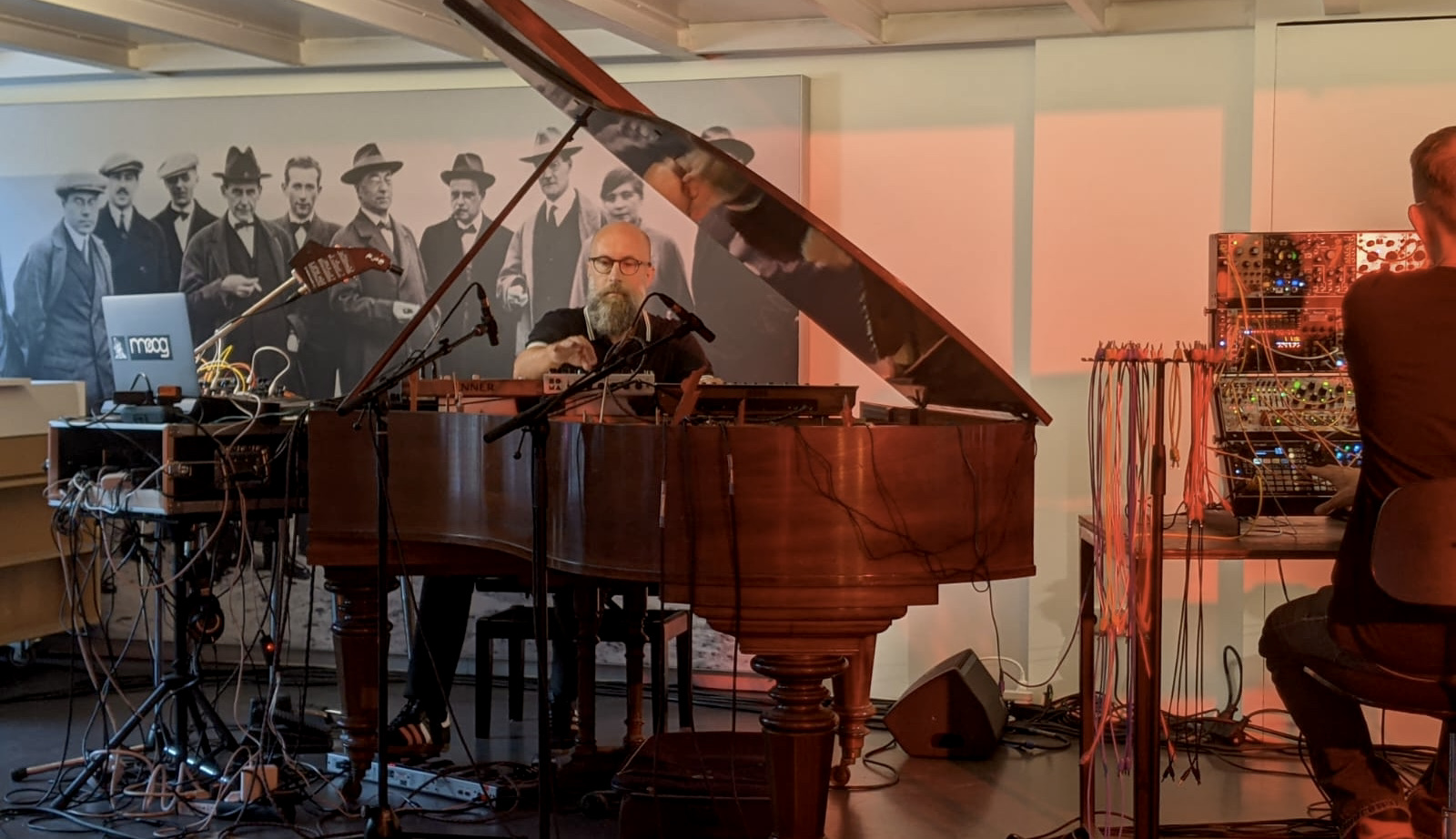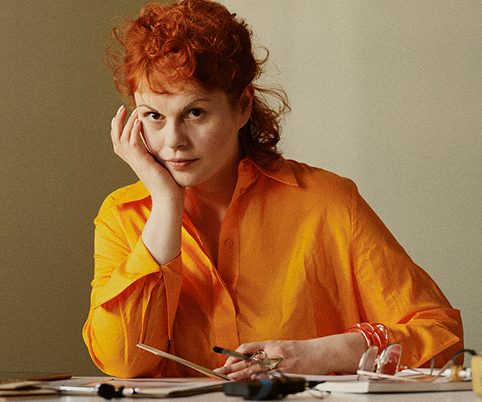Kubik Kollektiv and the Bauhaus Sound
Together with Adriana Kapsreiter, the Kubik Kollektiv created the musical accompaniment for the second season of the About Bauhaus podcast—a soundscape that reinterprets the spirit of Bauhaus in a modern way. But who is behind the Kubik Kollektiv, and what defines this unique sound?
Lorem ipsum
In the second season of the podcast About Bauhaus, the music of the Kubik Kollektiv takes center stage. This sound was specifically developed for the Bauhaus-Archiv and the podcast, unfolding through a series of improvisations inspired by the creative inputs and themes from podcast host Adriana Kapsreiter. This musical experiment is closely connected to the film project Bauhaus Forever by NOW Collective, a multi-year undertaking by director Nico Weber in collaboration with the Bauhaus-Archiv. Ralf Merten, founder of the Kubik Kollektiv, composed the film’s score.

Lorem ipsum
-
In About Bauhaus, the Kubik Kollektiv crafts a unique soundscape, with highlights from this sound journey woven into the evolving narrative of the film. The Kubik Kollektiv later appeared as a guest on Erwin Ditzner’s Carte Blanche at the Enjoy Jazz Festival and performed at the Temporary Bauhaus-Archiv during Lange Nacht der Museen in 2023.
-
The music also shaped the draft of the film, presented as a “Work in Progress” at the Ark Rex Film Festival in Helsinki in 2023—an experimental glimpse into a project still in the making. More performances, recordings, and releases are planned for the future.
“For me this was one of the most exciting tasks of the past years. How can I, as an art historian, present the content in such a way that the history of the Bauhaus feels so inspiring that people today could make music from it?”
Lorem ipsum
To capture the creative and experimental spirit of the historical Bauhaus, an artistic concept was developed that centers on community and collective improvisation. Adriana Kapsreiter and Ralf Merten chose not to replicate historical compositions; instead, they focused on a modern sound that merges elements of jazz, electronic music, and Krautrock. This approach allows the themes of Bauhaus history to be conveyed in an abstract, intuitive way.
For the recordings, the musicians selected unusual instruments and playing techniques. Piano and guitar strings were prepared to create sounds that echo the workshops of the Bauhaus school. Electronic effects and modular synthesizers reflect the mechanical aesthetics that shaped Bauhaus. This fusion of influences created an acoustic bridge between past and present, making the Bauhaus spirit palpable in a new sonic landscape.

